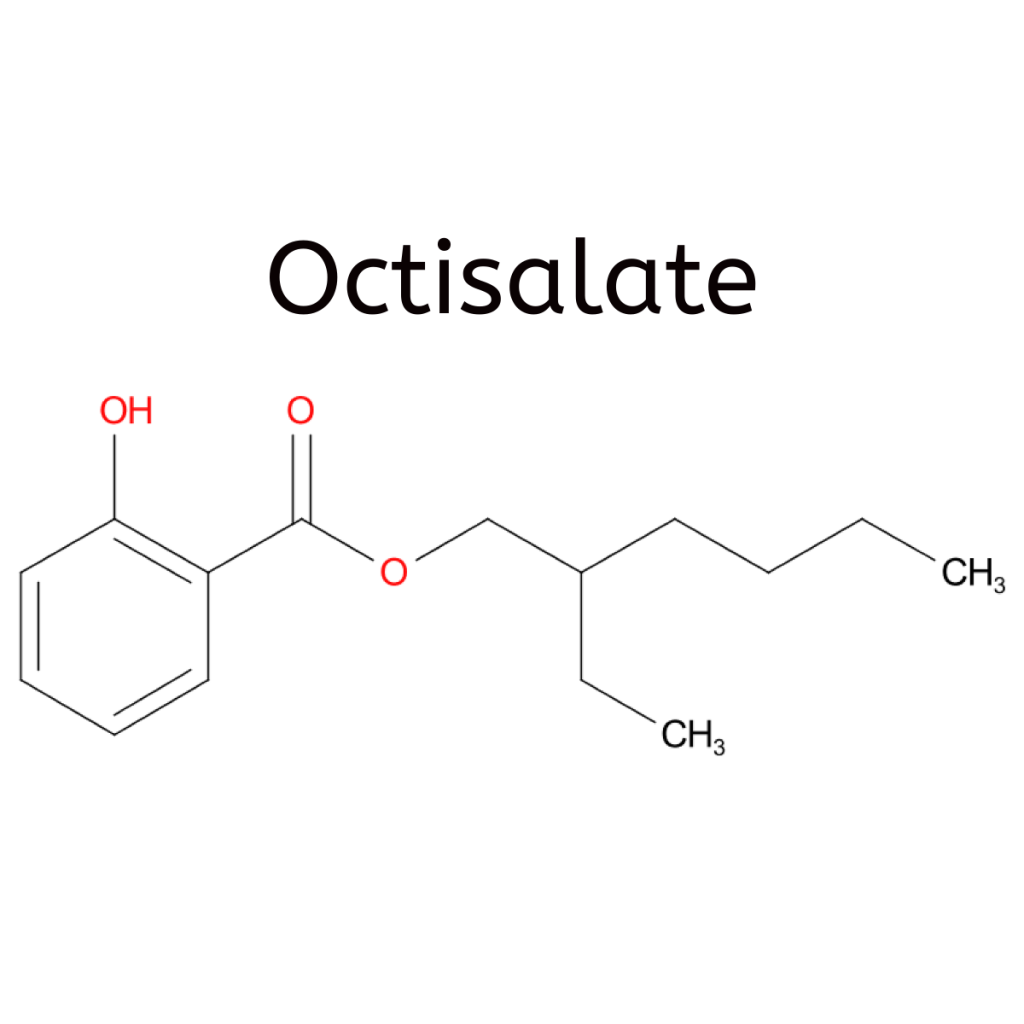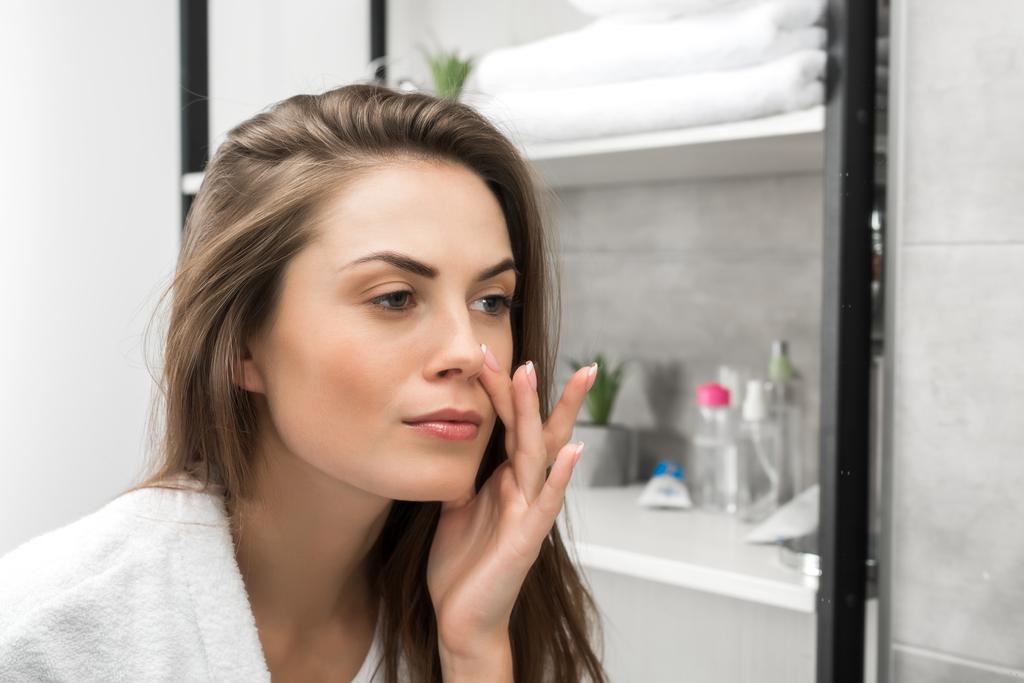Discover the benefits of octisalate for skin health and learn how this ingredient can protect your skin from harmful UV rays.
What is Octisalate and How Does it Benefit Skin Health?
If you’ve ever picked up a bottle of sunscreen and glanced at the list of ingredients, you may have come across a mysterious-sounding compound called Octisalate. What exactly is it, and what does it do for your skin? Let’s dive into the world of Octisalate and uncover its secrets!

Understanding Octisalate: A Comprehensive Overview
Before we delve into the benefits of Octisalate, let’s start with the basics. Octisalate, also known as ethylhexyl salicylate, is an organic compound commonly used in sunscreens. Its primary function is to absorb UVB rays from the sun, protecting your skin from harmful damage.
But what exactly is UVB radiation? Well, UVB stands for ultraviolet B radiation, which is a type of electromagnetic radiation emitted by the sun. It is responsible for causing sunburns, skin aging, and even contributing to the development of skin cancer. That’s where Octisalate comes to the rescue!
The Chemical Composition of Octisalate
Chemistry may not be everyone’s cup of tea, but bear with me for a moment. Octisalate is made up of a marvelous combination of carbon, hydrogen, and oxygen atoms. Trust me, this molecule may be small, but it packs a punch!
When you break it down, Octisalate consists of eight carbon atoms, eighteen hydrogen atoms, and two oxygen atoms. These atoms come together in a unique arrangement, forming a chemical structure that allows Octisalate to effectively absorb UVB rays.
The Role of Octisalate in Sunscreen Products
Sunscreen without Octisalate is like a cake without frosting – it just wouldn’t be the same. This fabulous compound works hand in hand with other sunscreen agents to provide broad-spectrum protection. It absorbs those pesky UVB rays before they can wreak havoc on your skin.
But how does Octisalate actually absorb UVB rays? Well, it’s all about its molecular structure. When UVB rays hit the Octisalate molecules on your skin, the energy from the rays is absorbed by the compound. This absorption process prevents the UVB rays from penetrating deeper into the skin, reducing the risk of sunburn and other sun-related damage.
Octisalate is also known for its photostability, which means it remains effective even when exposed to sunlight for extended periods. This makes it a reliable and long-lasting ingredient in sunscreen formulations.
Additionally, Octisalate is oil-soluble, making it easy to incorporate into various sunscreen products. Whether you prefer a lotion, cream, or spray, Octisalate can be seamlessly blended to provide you with the sun protection you need.
It’s important to note that Octisalate primarily protects against UVB rays and offers limited protection against UVA rays. To ensure comprehensive sun protection, it’s advisable to use a broad-spectrum sunscreen that contains both Octisalate and other UVA-absorbing ingredients.
So, the next time you slather on sunscreen, take a moment to appreciate the role of Octisalate in keeping your skin safe from the sun’s harmful rays. Its chemical composition and unique properties make it an essential ingredient in sun protection products.
The Connection Between Octisalate and Skin Health
Now that we understand what Octisalate is, let’s explore how it benefits our skin. The magic lies in its ability to shield us from the sun’s harsh rays, both in the short term and the long term.
But what exactly happens when Octisalate interacts with our skin? Let’s dive deeper into the science behind its protective properties.
How Octisalate Protects the Skin
Picture Octisalate as your skin’s very own superhero, tirelessly defending it against the harmful effects of the sun. By absorbing UVB rays, it prevents them from penetrating deep into your skin and causing damage.
But how does Octisalate actually absorb these rays? It acts as a chemical filter, converting the UVB radiation into less harmful heat energy. This process is crucial in preventing sunburns, reducing the risk of skin cancer, and maintaining the overall health of our skin.
Furthermore, Octisalate works in harmony with other sunscreen ingredients to ensure maximum protection. It’s like having a dream team of sun guardians watching over your skin! These ingredients, such as avobenzone and oxybenzone, complement Octisalate’s abilities, creating a powerful shield against the sun’s harmful rays.
The Impact of Octisalate on Skin Aging
Did you know that the sun is one of the main culprits behind premature aging? That’s where Octisalate comes to the rescue once again. By shielding your skin from harmful UVB rays, it helps prevent the formation of wrinkles, fine lines, and age spots.
But how exactly does Octisalate combat the signs of aging? UVB rays can damage the collagen and elastin fibers in our skin, which are responsible for its elasticity and firmness. By blocking these rays, Octisalate helps preserve the integrity of these fibers, keeping our skin looking youthful and vibrant.
Additionally, Octisalate’s protective properties extend beyond the surface of our skin. It helps prevent the breakdown of DNA in our skin cells, reducing the risk of genetic mutations and potential skin issues in the future. So, thank you, Octisalate, for keeping us looking youthful and protecting our skin’s long-term health!
The Safety and Side Effects of Octisalate
Now, you might be wondering, is Octisalate safe to use? Fear not, dear reader, for we are about to explore its safety profile and potential side effects.
Octisalate is a commonly used ingredient in sunscreens and skincare products due to its ability to absorb UVB rays. It is generally considered safe for most people. However, it’s important to note that everyone’s skin is unique, and some individuals may experience skin irritation or allergic reactions when using products containing Octisalate.
To determine if Octisalate is suitable for your skin, it’s always wise to perform a patch test before slathering it all over your beautiful face. Apply a small amount of the product on a small area of skin, such as the inner forearm, and observe for any adverse reactions. If redness, itching, or swelling occurs, it’s best to avoid using Octisalate-based products.
Understanding the Potential Risks
While Octisalate is generally considered safe, it’s essential to be aware of the potential risks associated with its use. In rare cases, some individuals may experience more severe allergic reactions, such as hives or difficulty breathing. If you experience any of these symptoms after using Octisalate, seek medical attention immediately.
Additionally, Octisalate may increase the skin’s sensitivity to the sun. This means that while it provides protection against UVB rays, it does not protect against UVA rays, which can cause long-term skin damage and premature aging. It’s crucial to use broad-spectrum sunscreens that protect against both UVA and UVB rays to ensure comprehensive sun protection.
How to Use Octisalate Safely
Listen up, sunscreen enthusiasts! To ensure optimal safety when using Octisalate-based products, follow these simple guidelines:
1. Apply Octisalate sunscreen liberally all over exposed skin, including those often-forgotten areas such as the ears and backs of hands. Don’t forget to protect those delicate areas!
2. Reapply sunscreen every two hours or more frequently if you’ve been frolicking in water or sweating up a storm. Sunscreen effectiveness diminishes over time, so it’s crucial to reapply regularly to maintain protection.
3. Remember, sunscreen is your best friend in the fight against the sun’s rays, but it’s not invincible. Combine sunscreen use with protective clothing, such as long-sleeved shirts, pants, and wide-brimmed hats. Seek shade during peak hours when the sun’s rays are most intense.
In conclusion, Octisalate is generally safe to use for most individuals. However, it’s crucial to be aware of your skin’s unique sensitivities and perform a patch test before incorporating Octisalate-based products into your skincare routine. By following proper sun protection practices, you can enjoy the benefits of Octisalate while safeguarding your skin from the harmful effects of the sun.
The Debate Around Octisalate
Octisalate, a compound known for its superhero-like sun protection qualities, has sparked a heated debate among experts and consumers alike. While many praise its effectiveness, there are concerns that cannot be ignored. Let’s delve deeper into the ongoing debate surrounding this multi-faceted compound.
The Environmental Impact of Octisalate
In recent years, the environmental impact of Octisalate has become a topic of great concern. Studies have raised alarming questions about its potential effects on marine ecosystems, particularly coral reefs and other marine life. The widespread use of Octisalate-containing products has led to worries about the long-term consequences on these delicate ecosystems.
Research suggests that when Octisalate enters the ocean through sunscreen application or wastewater runoff, it can accumulate in the water and pose a threat to marine organisms. Coral reefs, in particular, are susceptible to the harmful effects of Octisalate, as it can lead to coral bleaching and disrupt the delicate balance of these vibrant underwater ecosystems.
Environmental organizations and scientists are urging manufacturers and consumers to consider the impacts of Octisalate on marine life. They emphasize the importance of exploring alternative sun protection options that are both effective and environmentally friendly.
The Ongoing Research into Octisalate’s Effects
The beauty industry is constantly evolving, and researchers are actively investigating the safety and efficacy of Octisalate. Ongoing studies aim to address the concerns surrounding this compound and shed light on its potential risks and benefits.
Scientists are examining the absorption rate of Octisalate into the skin and its potential to penetrate deeper layers, raising questions about its long-term effects on human health. Furthermore, they are exploring the compound’s stability under various conditions, such as exposure to sunlight and water, to better understand its behavior and potential environmental impact.
As new findings emerge from these studies, it is crucial for consumers to stay informed and make choices that align with their values and the well-being of our planet. The beauty industry, too, must be responsive to these research findings and consider alternative ingredients that can offer effective sun protection without compromising the environment.
In conclusion, the debate surrounding Octisalate is far from settled. While it offers superhero-like sun protection, concerns about its environmental impact and potential health risks persist. It is essential for both manufacturers and consumers to stay informed and actively seek out sustainable and safe alternatives to ensure the well-being of our planet and ourselves.
Final Thoughts on Octisalate and Skin Health
So, dear reader, what have we learned about Octisalate and its effect on our cherished skin? It’s a diligent protector, shielding us from the sun’s harmful rays and reducing the risk of premature aging. However, we must also consider the potential risks and environmental impact associated with its use.

Making Informed Choices About Skin Care
The key to skin health lies in making informed choices. Consider your unique skin type, preferences, and environmental concerns when selecting products. Look for sunscreens that offer broad-spectrum protection, including UVB-blocking Octisalate, but also consider alternatives that minimize the risk to our delicate ecosystems.
The Future of Octisalate in Dermatology
As research in the field of dermatology continues to advance, we can anticipate exciting developments in sun protection. Scientists and innovators are hard at work, striving to create even more effective and environmentally friendly solutions. Perhaps the future holds a sunscreen superhero who can save our skin and the planet simultaneously!
In the meantime, embrace the power of Octisalate to keep your skin safe and healthy. Apply it generously, savor those sunny adventures, and always remember, laughter is the best wrinkle-fighter of all!






[…] the brand understands the importance of using high-quality ingredients that provide maximum benefits for your skin. Each product is carefully crafted with a blend of nourishing oils, hydrating hyaluronic acid, […]
[…] molecule has been shown to enhance the skin’s natural repair process and improve overall skin health. But that’s not all! StriVectin also packs their products with a variety of antioxidants, […]
[…] have made it a popular choice for those seeking natural remedies. The herb’s impact on skin health is just one of the many benefits it […]